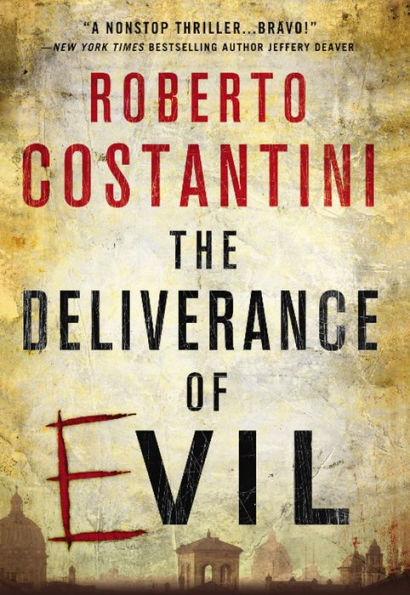The Deliverance of Evil
On July 11, 1982, Elisa Sordi was beautiful. Commissario Michele Balistreri was fearless. Italy was victorious.
A killer was waiting . . .
On July 9, 2006, with Sordi's case twenty-four years cold, and Balistreri haunted by guilt and regret, Italian victory returned. And so did Sordi's killer . . .
But this time Michele Balistreri would be ready. This time he would fear no evil.
"1114589241"
On July 11, 1982, Elisa Sordi was beautiful. Commissario Michele Balistreri was fearless. Italy was victorious.
A killer was waiting . . .
On July 9, 2006, with Sordi's case twenty-four years cold, and Balistreri haunted by guilt and regret, Italian victory returned. And so did Sordi's killer . . .
But this time Michele Balistreri would be ready. This time he would fear no evil.
The Deliverance of Evil
On July 11, 1982, Elisa Sordi was beautiful. Commissario Michele Balistreri was fearless. Italy was victorious.
A killer was waiting . . .
On July 9, 2006, with Sordi's case twenty-four years cold, and Balistreri haunted by guilt and regret, Italian victory returned. And so did Sordi's killer . . .
But this time Michele Balistreri would be ready. This time he would fear no evil.
On July 11, 1982, Elisa Sordi was beautiful. Commissario Michele Balistreri was fearless. Italy was victorious.
A killer was waiting . . .
On July 9, 2006, with Sordi's case twenty-four years cold, and Balistreri haunted by guilt and regret, Italian victory returned. And so did Sordi's killer . . .
But this time Michele Balistreri would be ready. This time he would fear no evil.
9.99
In Stock
5
1

The Deliverance of Evil

The Deliverance of Evil
eBook
$9.99
Related collections and offers
9.99
In Stock

Product Details
| ISBN-13: | 9781623650032 |
|---|---|
| Publisher: | Quercus |
| Publication date: | 02/11/2014 |
| Series: | A Commissario Balistreri Mystery |
| Sold by: | Hachette Digital, Inc. |
| Format: | eBook |
| File size: | 1 MB |
About the Author
From the B&N Reads Blog
